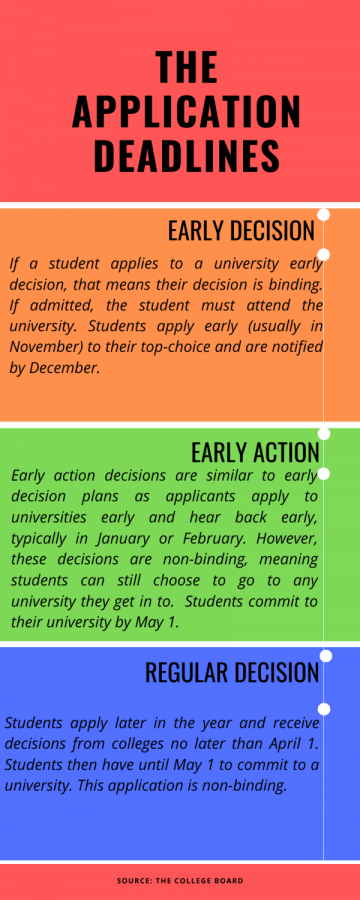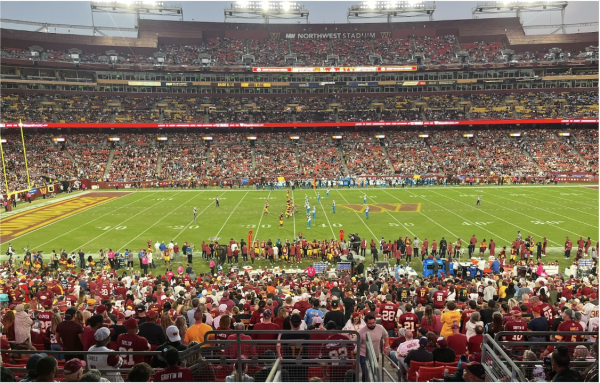Early decision gives unfair advantage to wealthy applicants
Starting in December, seniors received word from colleges they applied to for early decision —an application process in which students agree to attend a school if they are admitted. Many seniors received their financial aid package only after they have been offered acceptance. While early decision can be a great way for students to show a school that it is their top school, it can also give an unfair advantage to wealthier applicants who are not concerned about financial aid.
According to The Washington Post, while other application deadlines allow students to apply to schools early, early decision offers a significant advantage to students. In 2016, at highly selective universities, which are schools that accept around a third or fewer of total applicants, more than 40 to 50 percent of students admitted applied early decision. According to the State of College Admission report by the National Association for College Admission Counseling (NACAC), the average acceptance rate for regular decision in 2016 was 48 percent as compared to 60 percent for early decision applicants, mostly due to a smaller pool of early decision applicants students compete against. At Vanderbilt University, the acceptance rate for the class of 2022 changed from a 7.8 percent for regular applicants to a 20.5 percent acceptance for early decision applicants. Early decision students receive financial aid information in mid-December with their acceptance, and the total cost of tuition without aid amounted to $73,000. There are ways students lower the initial cost of college: many students use acceptances to other schools as a way to convince their college of choice to give them more money, offering to attend the school if the university will match aid they have been granted elsewhere. However, for early decision applicants, the financial aid offer cannot be changed this way. Students have already guaranteed they will be attending their school, so no negotiations to change financial aid offerings can take place.
According to Inside Higher Ed, Since the only students who can apply early decision are those that can afford to without seeing their financial aid package, there are fewer low-income applicants. Furthermore, according to The Century Foundation, at highly selective schools, the early decision applicant pool has three times as many white applicants than the regular decision pool. This makes early decision just one factor that contributes to equity problems universities already experience. Because of this equity issue, some articles, like the one that included this data, recommend a complete elimination of this process.
An issue also arises for students commonly found in the Washington, D.C. area: students who are wealthy enough to receive minimal financial aid, but not wealthy enough to fully pay for college. With the cost of living being so high in the area, families may struggle with the cost of a college education unless their income is extraordinarily high. While many schools offer merit-based aid, many competitive schools do not. Early decision applicants in this predicament are left in a tough spot when they receive a financial aid package as it may not cover their cost of attendance, but leaves them little room to protest.
It is true that schools allow students to break the binding agreement if they cannot pay to attend. However, this means students are no longer enrolled in that school, and they may have missed deadlines for applications to other schools.
NACAC’s report also noted that 49 percent of schools have an early decision application. This year, schools such as the University of Virginia and Boston College added early decision options to their applications. This growth in early decision applications cannot continue. In order for universities to continue the push for economic and racial equity in the application process, early decision cannot remain as influential as it is. It is true that universities use early decision applications to ensure they have a full class of students per year, however, when a college uses its early decision applicants to fill fifty percent of its class, those inequality issues arise. Early decision must not account for as much of an advantage in the admissions process for students.













